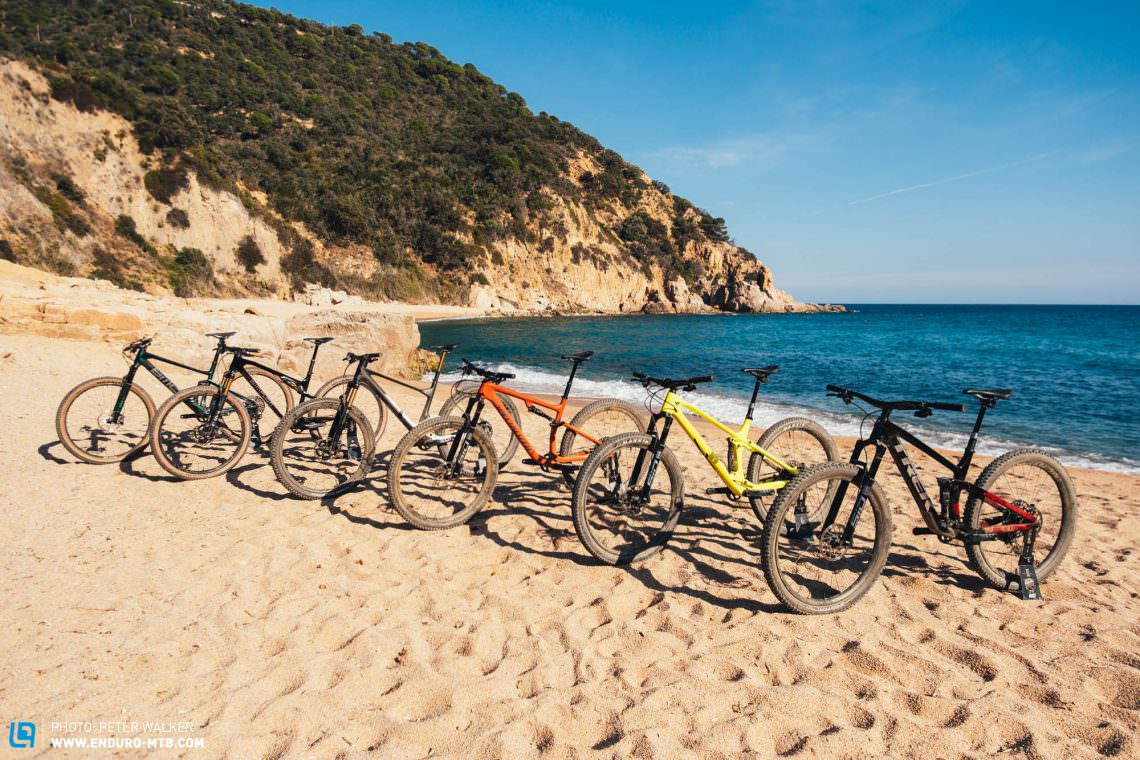Simplon Cirex SL 120 – In our big 2022 downcountry group test
At 9.98 kg, the Simplon Cirex SL 120 is the lightest bike in the entire test field. Moreover, its spec can be customised down to the smallest detail using Simplon’s online configurator. Can the Simplon Cirex SL 120 assert itself against the competition or does it take more than a weight-optimised spec and extra travel to secure victory in our 2022 downcountry group test?
For an overview of the test fleet head to the group test: The best downcountry bike of 2022 – 6 models in review
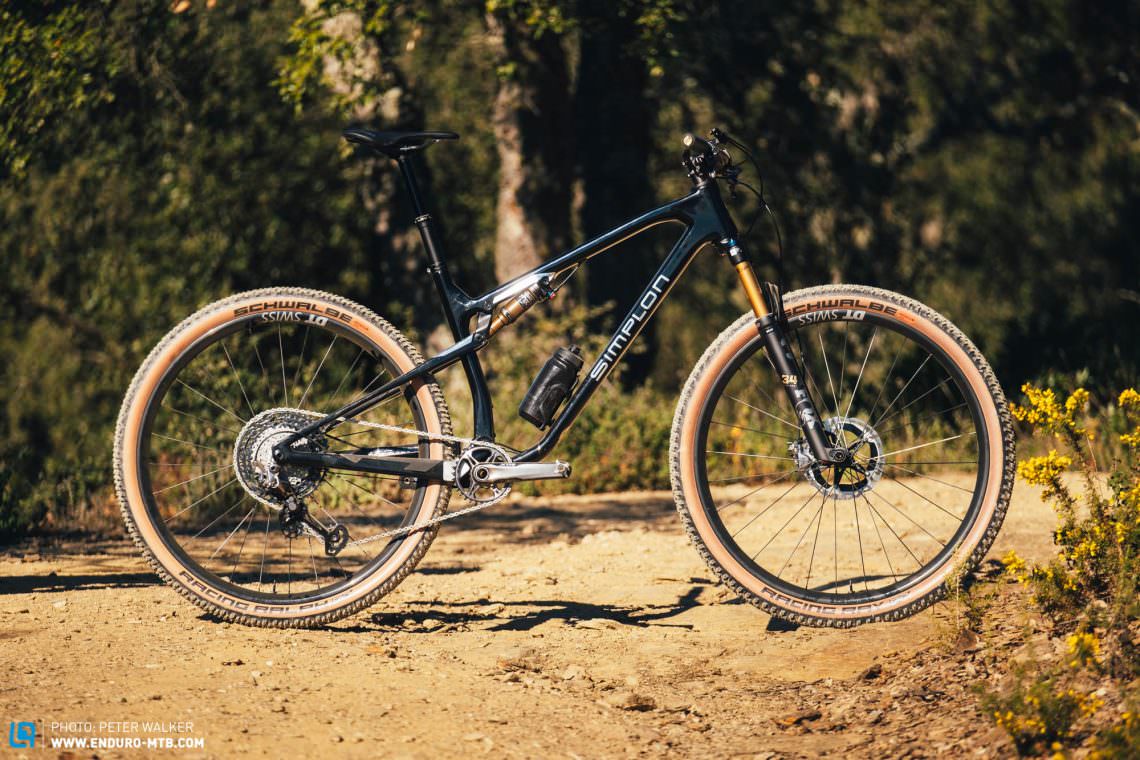
10 kg in size L | € 9,389 | Manufacturer’s website
The Simplon Cirex SL 120 stands out from the competition through a very cool feature – and that’s even before you buy the bike! We’re talking about SIMPLON’s online configurator, which allows you not only to pick and change single components, such as the brakes, wheels, cockpit, but also to choose the amount of travel on your fork and shock. Depending on your needs and preferences, you can set up the Cirex as a XC or downcountry bike because the beefier SL 120 version relies on the same frame platform as the XC model – which is a regular on the World Cup XC circuit. As the name suggests, the Cirex SL 120 offers 120 mm travel at the front, complemented by 116 mm at the rear. The SL 120 employs the same full carbon frame with flex stays as its XC counterpart, whereby the SL suffix tells you that you’re looking at the super lightweight frame, which is around 200 grams lighter than the standard version. Tilting the scales at 9.98 kg, the € 9,389 Simplon is the only bike in this test to break below the 10 kg barrier, which is mainly due the its weight-optimised spec. This makes it almost 1.5 kg lighter than its counterparts! All cables are bundled together and routed into the frame through the headset. While the cable routing ensures a tidy frame, countless cables and clamps make for a rather crowded cockpit. Nevertheless, the cables don’t rattle on the trail, ensuring a quiet ride together with the minimalist but very efficient chainstay protector. Simplon also have you covered with your vital fluid intake, providing the Cirex with not one but two bottle-cage mounts! Unfortunately, the frame doesn’t feature an integrated storage compartment or tool mount – but that’s the case with most bikes in this test.
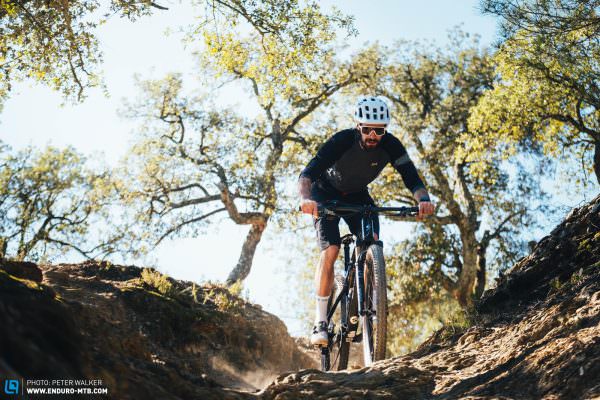

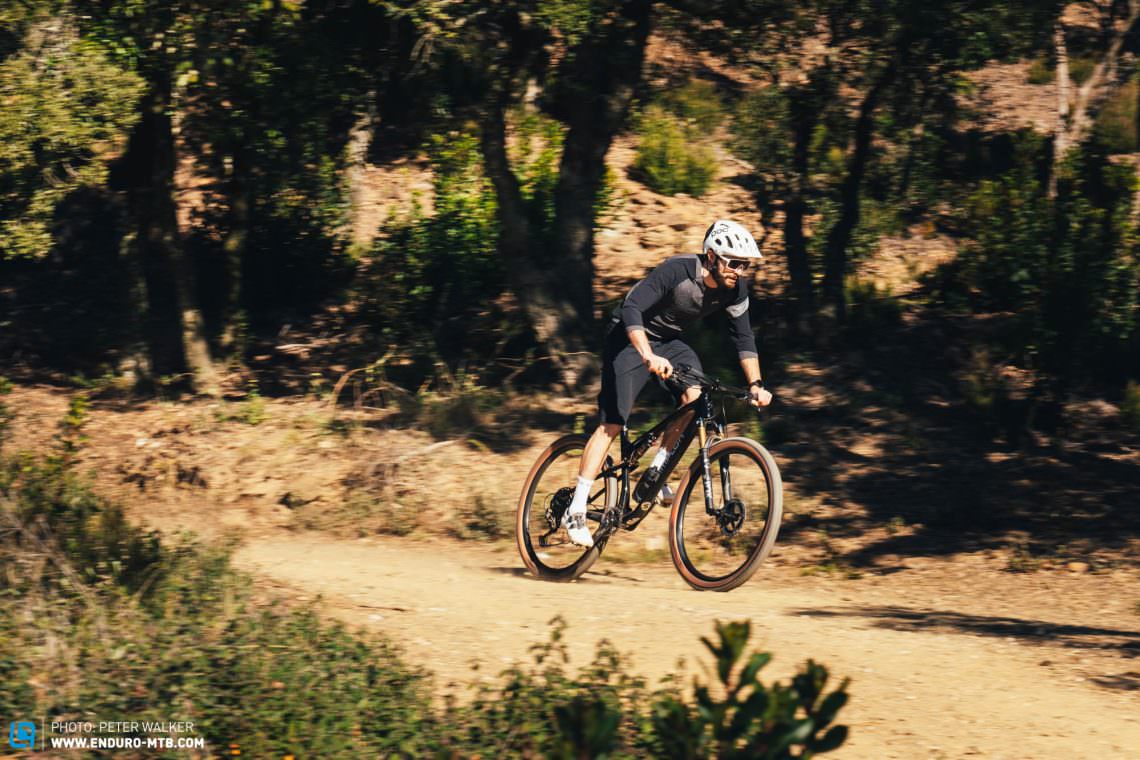
The spec of the SIMPLON Cirex SL 120
While Simplon’s extensive online configurator allows you to adapt the spec to your needs and preferences, we couldn’t find all the components to build the ultimate downcountry rig. This explains the Shimano XTR two-piston brakes on our test bike, which Simplon pairs with a 180 Shimano IceTech rotor at the front and a smaller 160 mm disc at the rear. While the lighter carbon levers and magnesium housing help save weight, the XTR two-piston version offers less adjustment options than the four-piston XTR’s of the SCOTT and delivers too little braking torque. Unfortunately, there’s no four-piston brake option in Simplon’s online configurator either. A Shimano XTR 12-speed drivetrain ensures smooth and precise shifting while the UDH mech hanger is easy to find and quick to replace. The FOX Factory suspension consists of a 34 Step-Cast FIT4 fork and Float DPS shock. As the name suggests, the former relies on a weight-optimised Step-Cast chassis, which saves approx. 200 grams but has far less torsional stiffness than conventional FOX 34 models, thus offering less precise handling, particularly with heavy and aggressive riders.
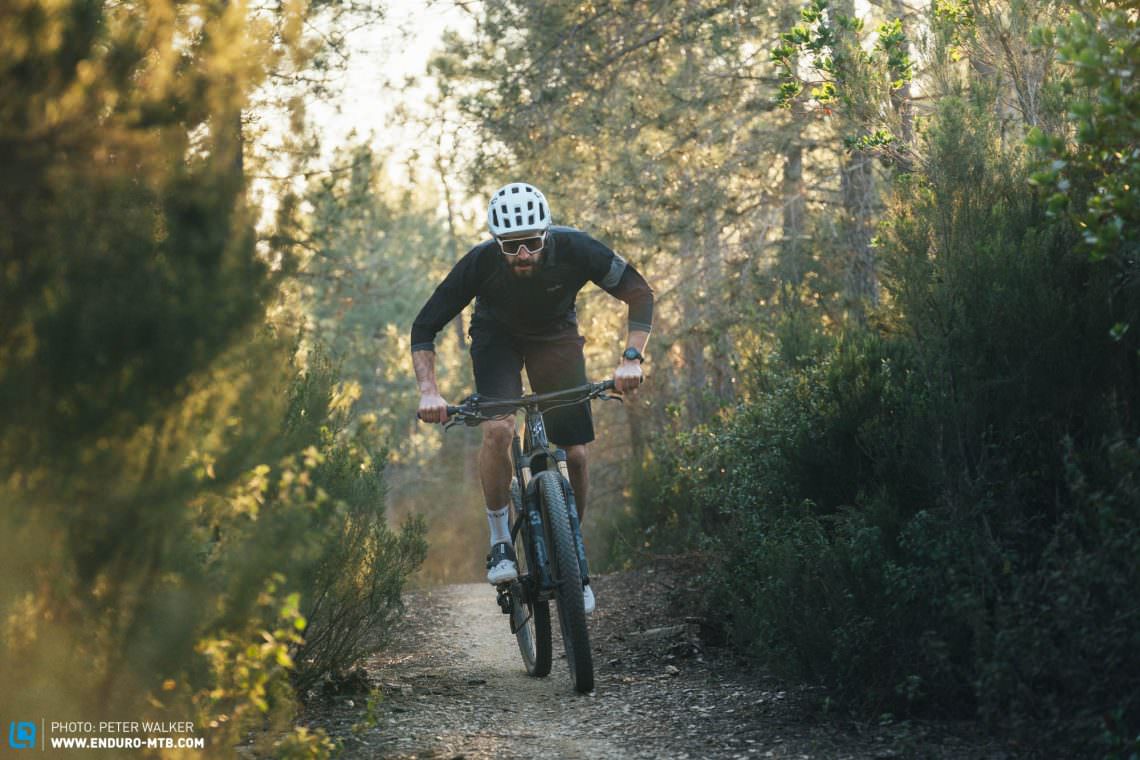
Lock out the shock, clench your teeth and pedal as hard as you can, until you smell the lactic acid in your nostrils. On level ground, you’ll leave your riding buddies behind in a cloud of dust!
The Float DPS shock controls 116 mm travel at the rear and is connected with the fork via a two-stage lockout and operated by a remote on the handlebars. However, the latter sits on top of the handlebars, where it’s exposed to impacts and spoils the overall clean look of the Simplon. Unfortunately, the online configurator doesn’t let you change the tires either, which is a shame, because the stock 2.25″ Schwalbe tires were designed specifically for XC racing and thus feature the paper-thin Super Race casing and very hard ADDIX Speed rubber compound. Simplon combine a Racing Ray at the front and Racing Ralph at the rear, which provide decent propulsion on level ground but offer poor traction on the trail. The tires are mounted on a DT Swiss XRC 1200 carbon wheelset. A KindShock the Liv Integra dropper post is meant to provide freedom of movement on the trail but only offers 125 mm travel – which is a lot for XC racers but too little for downcountry shredders. The dropper remote ensures smooth action but feels a little spongy. For the cockpit, Simplon rely on their own 765 mm carbon handlebars and flat stem.
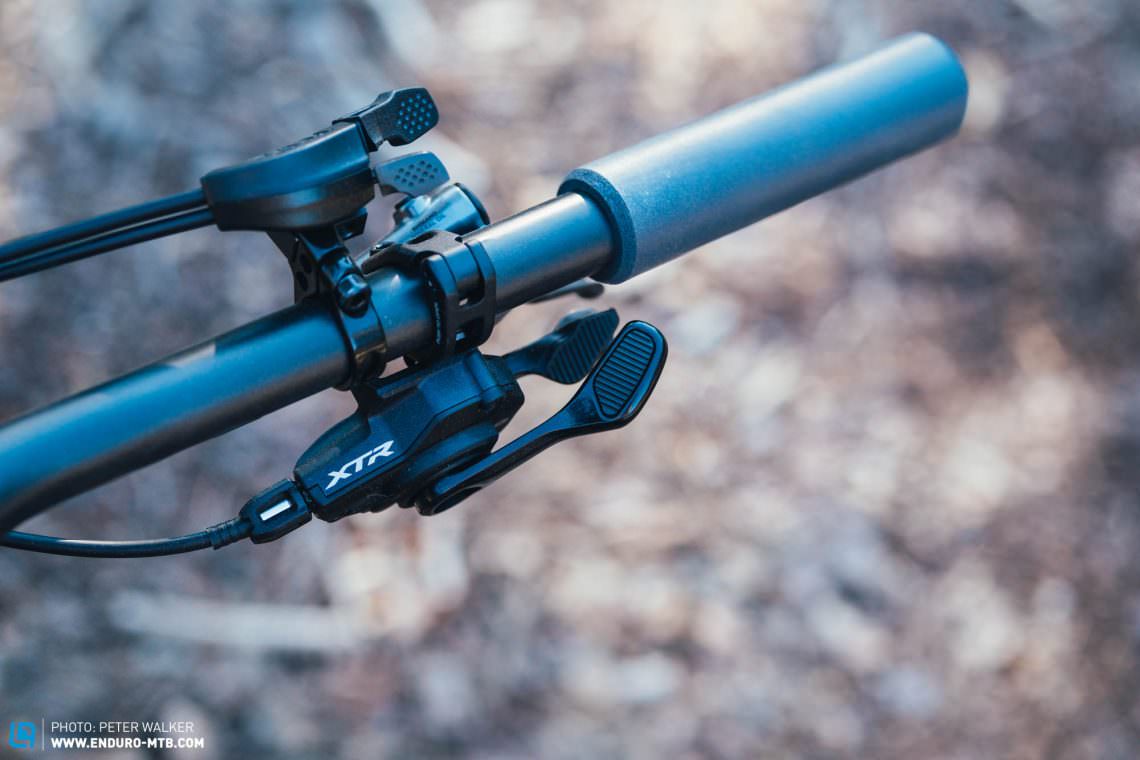
The two-stage lockout lever sits on top of the handlebars and is attached to an extra clamp, spoiling the sleek look of the Cirex. A three-stage climb switch would make a huge difference!
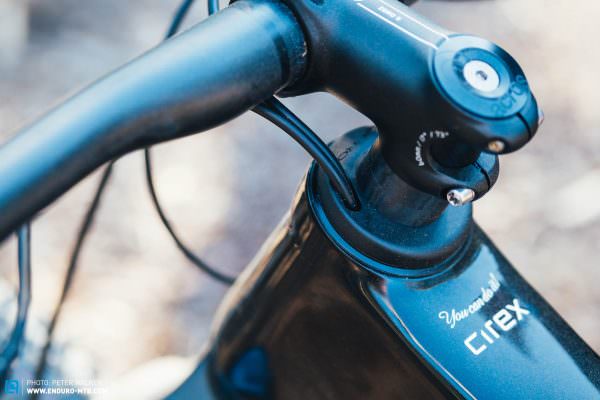
All cables are bundled together and routed into the frame through the headset, ensuring a clean-looking frame.
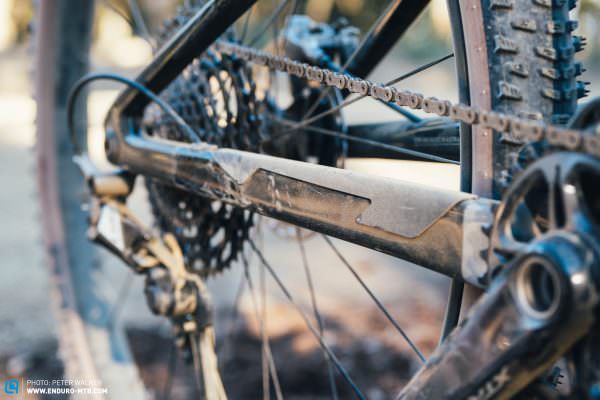
The chainstay protector of the Simplon may look a little flimsy but does its job on the trail, ensuring a quiet ride.
SIMPLON Cirex SL 120
€ 9,389
Specifications
Fork FOX 34 Factory FIT4 Step-Cast 120 mm
Rear Shock FOX FLOAT DPS Factory 116 mm
Seatpost KS LEV INTEGRA 125 mm
Brakes Shimano XTR 180/160 mm
Drivetrain Shimano XTR 1x12
Stem SIMPLON ZERO II 70 mm
Handlebar SIMPLON Carbon 765 mm
Wheelset DT Swiss XRC 1200 (30 mm) 29
Tires Schwalbe Racing Ray Super Race Evo ADDIX Speed/Schwalbe Racing Ralph Super Race Evo ADDIX Speed 2.25
Technical Data
Size S M L XL
Weight 10 kg
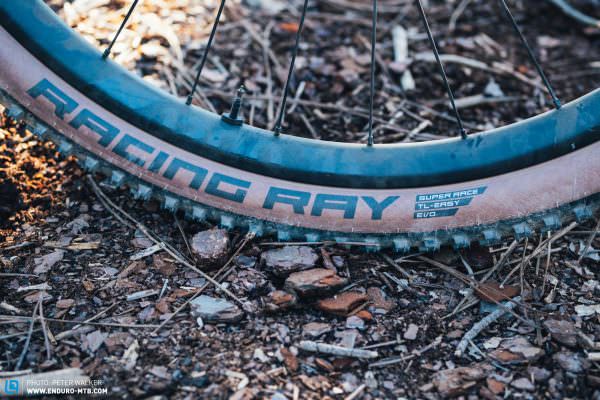
… However, Ray was actually developed for XC racing and relies on a paper-thin casing and hard rubber compound, which generates poor traction, both up and downhill. On top of that, the fragile casing requires high air pressures to prevent irreversible damage to the carbon rims.
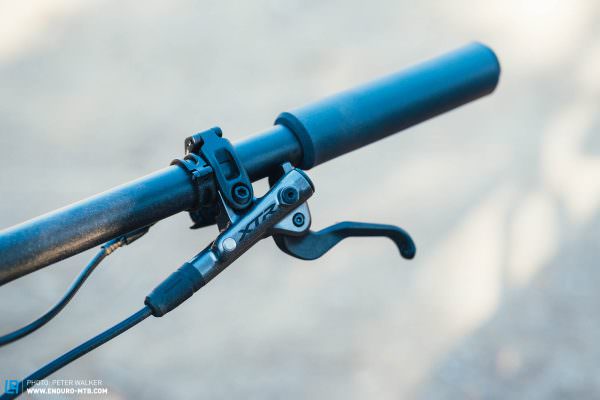
The two-piston Shimano XTR brakes are a specific XC model, which relies on a magnesium housing and carbon levers. However, the weight saving is only marginal and comes at the expense of braking power. Moreover, the levers don’t feature reach and bite point adjustments.
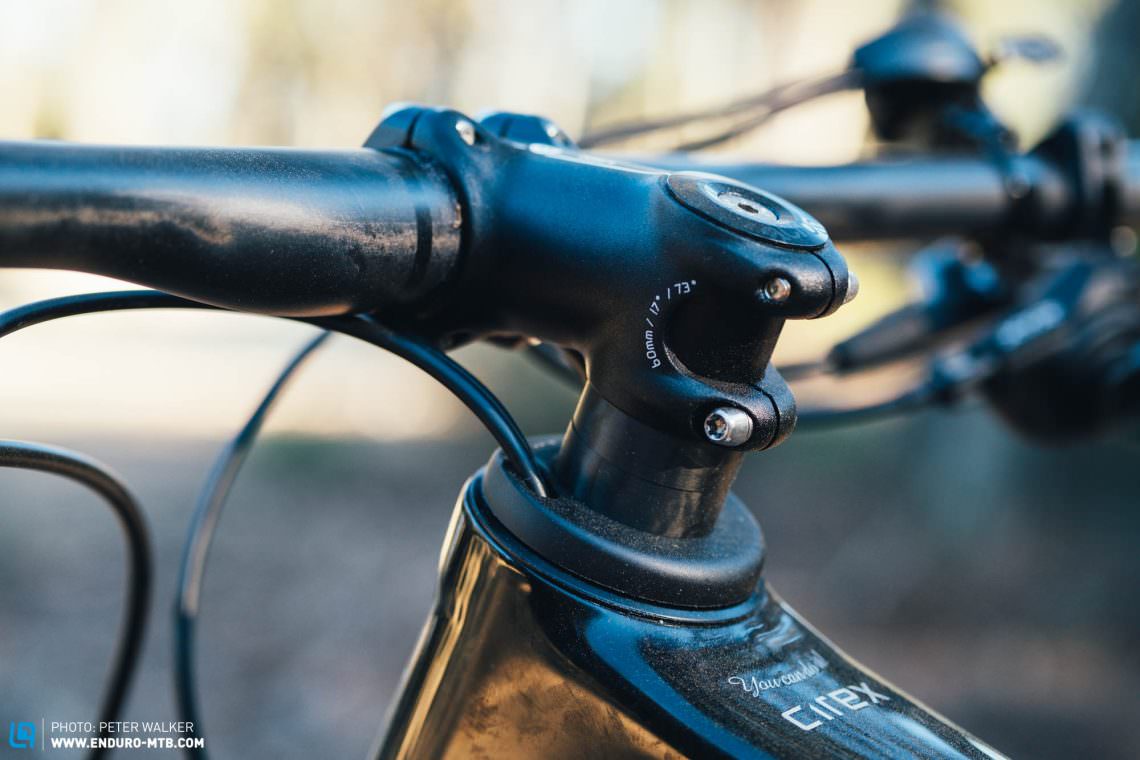
The flat stem of the Simplon pulls your weight over the front and, conveying a racy XC feeling and preventing the front wheel from lifting on steep climbs.
The geometry of the SIMPLON Cirex SL 120
The Simplon Cirex SL 120 is available in four sizes, S to XL. At 471 mm, it has one of the longest reaches in the entire test field, which Simplon combine with 620 mm stack height. Seat tube length is 465 mm, which is pleasantly short but totally pointless with a short-travel dropper post. Unfortunately, this combination restricts freedom of movement on the bike enormously.
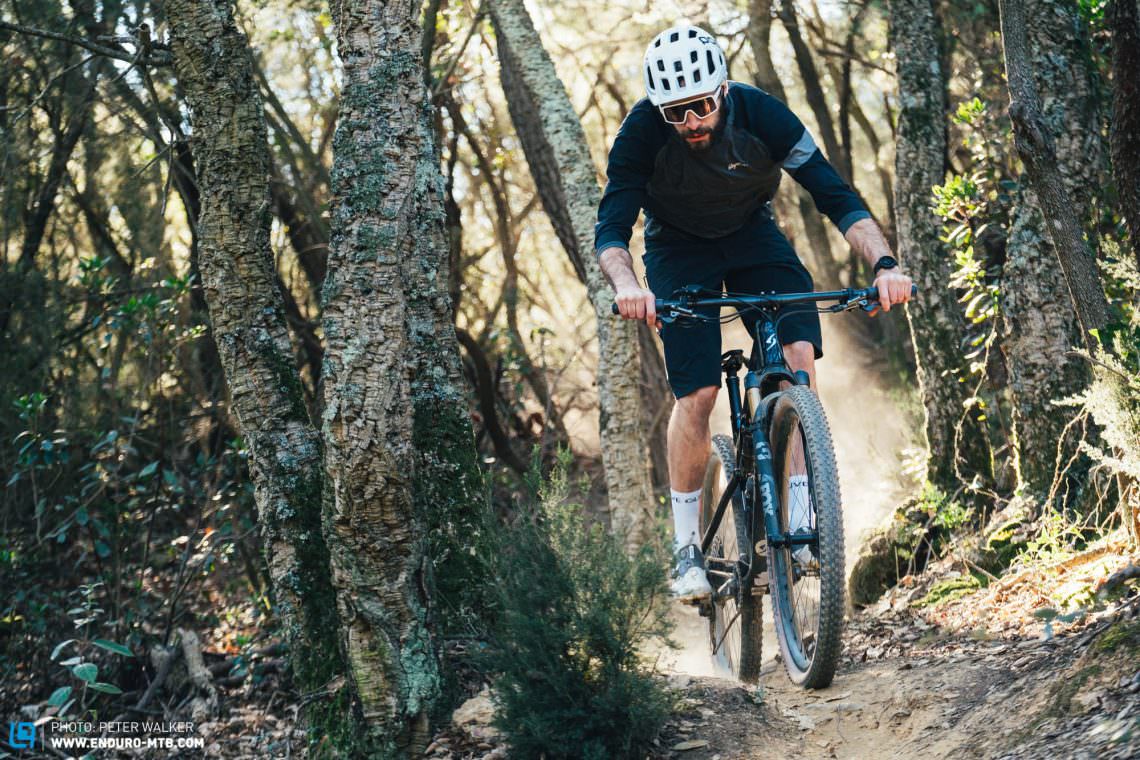
With the locked-out shock, the Simplon Cirex SL 120 pulls past the competition and generates good traction – provided you’re riding on level ground.
| Size | S | M | L | XL |
|---|---|---|---|---|
| Seat tube | 390 mm | 425 mm | 465 mm | 510 mm |
| Top tube | 577 mm | 605 mm | 627 mm | 655 mm |
| Head tube | 89 mm | 102 mm | 115 mm | 128 mm |
| Head angle | 67.4° | 67.4° | 67.4° | 67.4° |
| Seat angle | 75.4° | 75.4° | 75.9° | 75.9° |
| Chainstays | 435 mm | 435 mm | 435 mm | 435 mm |
| BB Drop | 40 mm | 40 mm | 40 mm | 40 mm |
| Wheelbase | 1,134 mm | 1,164 mm | 1,194 mm | 1,224 mm |
| Reach | 421 mm | 446 mm | 471 mm | 496 mm |
| Stack | 596 mm | 608 mm | 620 mm | 632 mm |
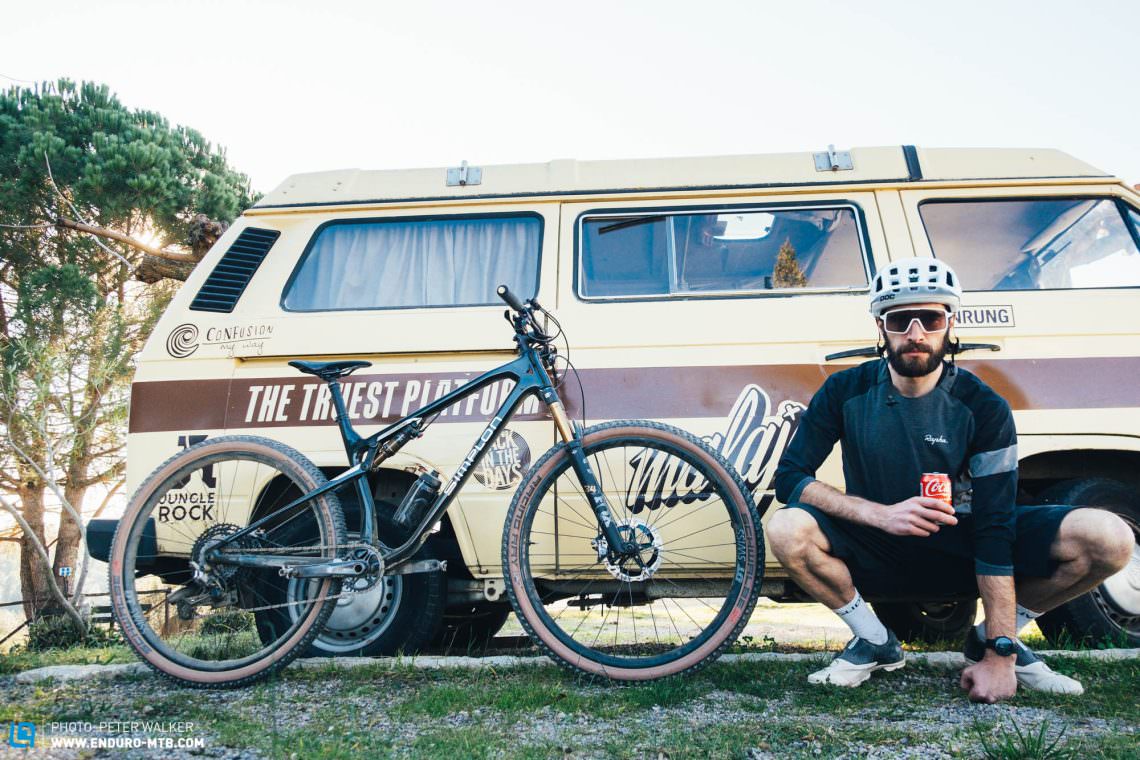
Jersey Rapha Trail 3/4 Sleeve | Shorts Rapha Trail Shorts | Shoes Suplest Crosscountry Pro
Socks Maloja KhongpuM. | Watch Garmin Forerunner 45
The SIMPLON Cirex SL 120 on the trail
When making your way to the trailhead, the long reach ensures a stretched pedalling position and puts a fair amount of pressure on your hands, particularly on level ground – a position that conveys a real XC racy feel! With the shock in open mode, the rear suspension wallows noticeably and tends to bob when pedalling. However, with the suspension locked out, the superlight Cirex accelerates willingly, leaving behind the entire test field in a big cloud of dust – provided you’re riding on level ground! Because with its shallow-profiled tires and locked-out suspension, the Cirex struggles to generate traction, losing its momentum and speed as soon as the trails get steeper. When negotiating climbs on loose terrain with roots and ledges, the Simplon requires a vigilant riding style and a good set of riding skills. On technical climbs, the Cirex even lags behind the heaviest bike in test, the Trek Top Fuel, which generates far more traction with its excellent rear suspension and grippier tires. With the climb switch in fully open mode, the Simplon generates more traction but swallows up the rider’s input like a sandbag. The three-stage lockout of the BMC and SCOTT would be very helpful in these situations. That being said, the front-heavy pedalling position prevents the front wheel from lifting, making it easy to negotiate steep climbs – as long as the tires generate enough traction.
Downhill, the weight-optimised spec slows down the Simplon Cirex 120 SL significantly. While the spec can be adapted using Simplon’s online configurator, all available components are mainly suited for XC.
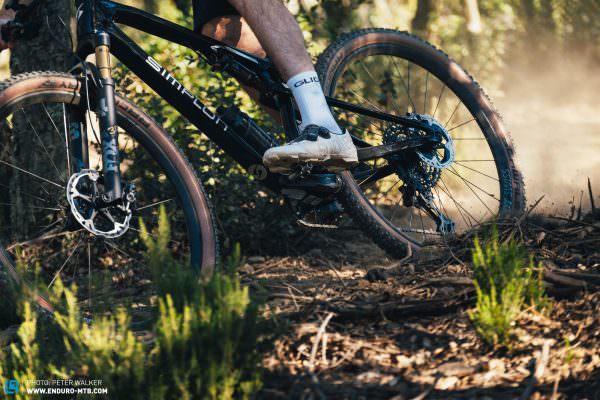

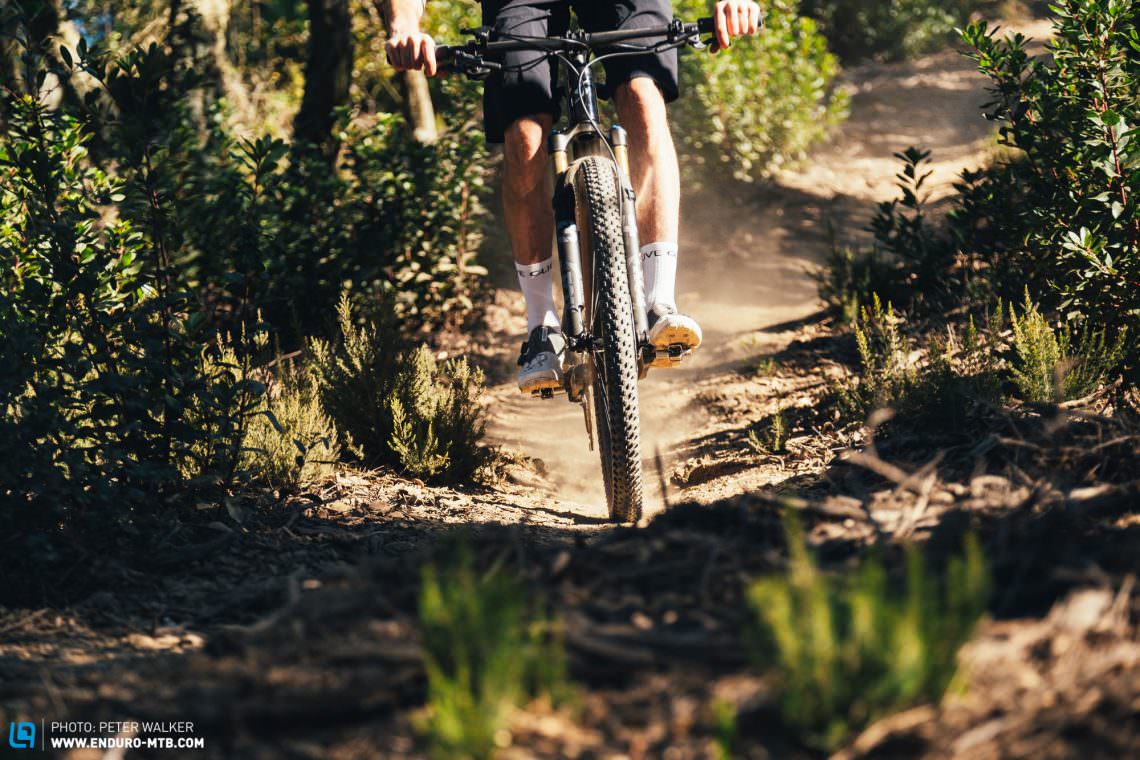
The shallow-profiled tires and weak brakes of the Cirex force you to slam on the brakes early – unless you’re aiming for the French line.
Needless to say, the stretched riding position also pulls you far over the front downhill. As a result, the Cirex inspires little confidence despite its precise handling, requiring good riding skills on technical descents. Moreover, the short dropper post limits freedom of movement, robbing you of even more confidence. At high speeds, the Cirex lacks composure while the shallow-profiled tires, low front and poor braking power limit the potential of the bike enormously. As a result, the Cirex SL feels nervous and unsteady on the trail, thus appealing mainly to riders who want to take it easy downhill and are looking for decent propulsion on gravel roads and flat trails instead.
Tuning tips: more robust tires with a more aggressive profile and softer rubber compound | four-piston brakes

Conclusion
The Simplon Cirex SL 120 rides like a thoroughbred racing machine on fire roads and flat trails but quickly reaches its limits on technical trails, both up- and downhill! On the climbs it even falls behind the heaviest bike in this test, the Trek Top Fuel! On the trail, the weight-optimised spec doesn’t do the Cirex any favours, killing the riding fun and robbing you of confidence on the downs. That’s a real shame, because just by adding a few more spec options to their configurator, Simplon would allow you to build a much more capable bike.
Tops
- light-footed and nimble on level ground
- silent on the trail
Flops
- spec doesn’t do justice to the intended use
- rear suspension wallows and bobs when you pedal
- fails to inspire confidence downhill
You can find out more about at simplon.com
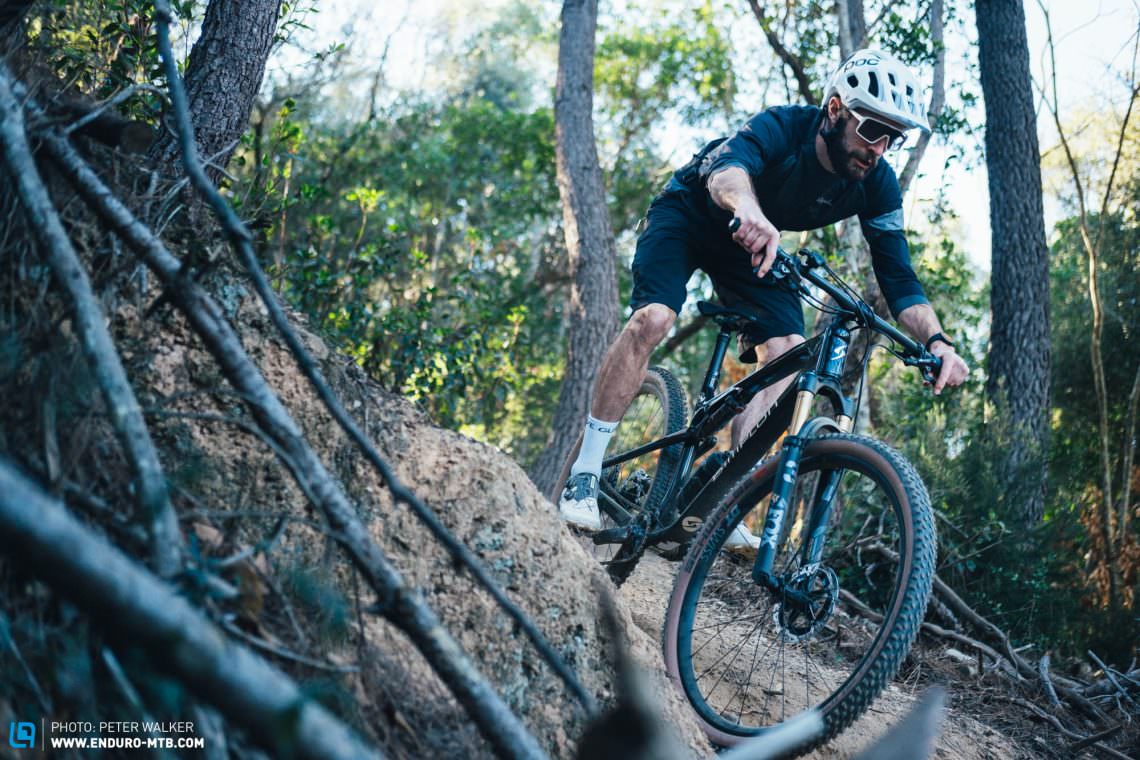
The test field
For an overview of the test fleet head to the group test: The best downcountry bike of 2022 – 6 models in review
All bikes in test: BMC Fourstroke 01 LT ONE (Click for review) | SCOTT Spark 900 Tuned AXS (Click for review) | SIMPLON Cirex SL 120 | Specialized Epic EVO Expert (Click for review) | Trek Top Fuel 9.9 XX1 AXS (Click for review) | YT IZZO UNCAGED 7 (Click for review)
